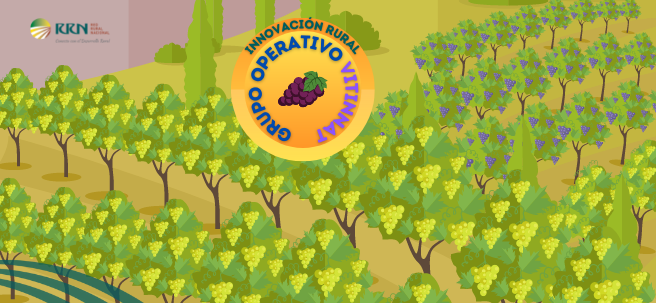
23 de September de 2021
09/22/2021. Currently, one of the biggest problems in grape cultivation is wood diseases. Hence the creation of the VITINNAT Operational Group, created in 2018 to provide the wine sector with natural, sustainable, and innovative solutions for preventing and combating wood diseases, thereby increasing productivity without affecting fruit quality.
- The VITINNAT Operational Group presents results after its establishment in 2018.
- Its objective has been to provide the wine sector with sustainable measures against wood diseases, to increase productivity without influencing the quality of the wine.
To this end, the Operational Group has worked on two lines of research :
- Circular economy : researching a new zero-waste product whose active ingredients come from natural extracts derived from agro-industrial waste.
- Multipurpose technology : use of ozone technology to control soil-borne wood diseases. This technique, when used in conjunction with other natural solutions, allows for use in both organic farming and integrated production.
Results
VITINNAT presented the results at a conference held on September 6th. The results of their research, which spanned three years, were:
- The development and field evaluation of three new products based on natural extracts to control airborne wood diseases in grapevines. These products are easy to apply for the end user and are suitable for organic farming.
- It proposes ozone technology to control soil-borne wood diseases using irrigation water, making it available to potential users. This approach has successfully reduced the microbial load in the soil and irrigation system, while regenerating the soil by introducing beneficial microorganisms, which strengthen the plant and improve production.
- Development of a comprehensive grapevine strategy aimed at producing grapes and wine without pesticide residues and reducing the use of chemicals in cultivation. To this end, a guide has been developed and will soon be made available to users.
The project's technical manager, Juan Ignacio Gutiérrez, tells the RRN that "vine diseases affect the interior of the wood and can only be cured over the long term. Therefore, our formulations (extracts similar to a phytosanitary product) are primarily used for prevention." Gutiérrez adds two successes achieved within the Operational Group: "On the one hand, we have managed to develop three extracts or formulations instead of one, and we are also in the process of obtaining patents for their commercialization."
Juan Ignacio believes that the goal of replacing chemical pesticides with new formulations and mitigating risk with these new extracts is largely met at the end of the research.
These objectives are aligned with the European Commission's "Farm to Fork " strategy, which aims to achieve more sustainable agricultural production, highlighting the reduction in the use of chemical pesticides (up to 50%) by 2030.
Components
The participants and beneficiaries of the VITINNAT Operational Group have been: National Agro-Food Technology Centre (CTAEX) , Matarromera Family Wineries , IDAI Nature , AGROZONO and Carlos III Health Institute .
And the following have collaborated: Regulatory Council of the DO Ribera del Duero , the Wine Technology Platform Association , the Spanish Society of Organic Agriculture and the Scientific and Technological Research Centre of Extremadura (CICYTEX) .











